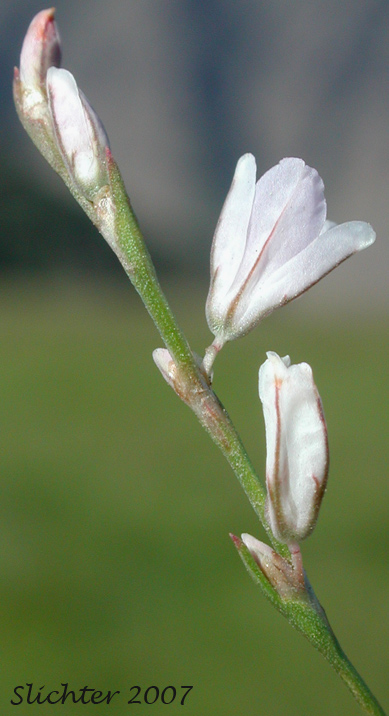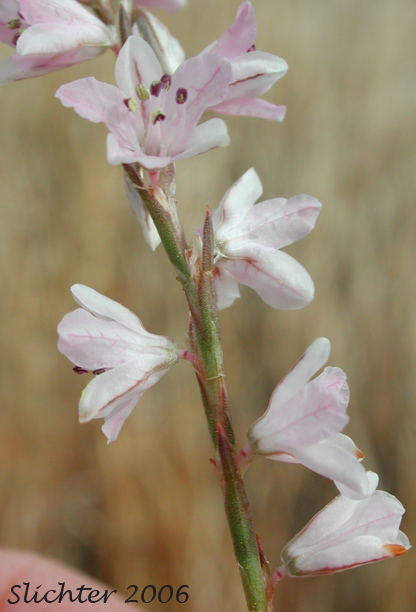[Fleeceflowers and Knotweeds: The Genera Aconogonon, Bistorta, Fagopyrum, Fallopia, Persicaria and Polygonum East of the Cascades of Oregon and Washington]
Wiry Knotweed, Palouse Knotweed
Polygonum majus
Synonyms: Polygonum coarctatum var. majus, Polygonum douglasii ssp. majus
 -
-  -
- 
Several images of wiry knotweed as seen from sandy to rocky soils along the Stubblefield Trail adjacent to the northeastern corner of the southern Pine Lakes, Turnbull National Wildlife Refuge.......July 4, 2018.
Characteristics:
Wiry knotweed is an upright annual with simple to branched stems
afrom 10-30 cm tall. The stems are strongly angled, and the numerous leaves
are found on the stems. The leaves are linear to oblong, mostly 2-5 cm long
and 2-7 mm wide, sessile, and reduced in size upwards on the stem. The stipules
are 10-15 mm long. The flowers are mostly paired in the elongate racemes. They
are in the axils of the upper, reduced bracts. The flowers are about 4-5 mm
long, greenish-white with white or pink margins. There are 8 stamens, with puple
anthers.
Habitat:
Wiry knotweed may be found on dry gravelly or heavy soils from
the sagebrush desert to mountainous ponderosa forests.
Range:
Wiry knotweed may be found east of the Cascade Mts. from northern
Washington south to northern California, and east to Idaho and western Montana.
 -
- 
Two photos showing the upper stem leaves and inflorescence of wiry knotweed as seen at about the five mile mark of Hat Pt. Road in Hells Canyon National Recreation Area.........June 28, 2007.

The photo above shows one of the narrow stem leaves of wiry knotweed. Photo from Hat Pt. Road in Hells Canyon National Recreation Area..........June 28, 2007.

The photo above shows the inflorescence of wiry knotweed as seen from a sandy to rocky soils at Horsethief Butte to the northeast of The Dalles, OR........October 7, 2006.
Paul Slichter